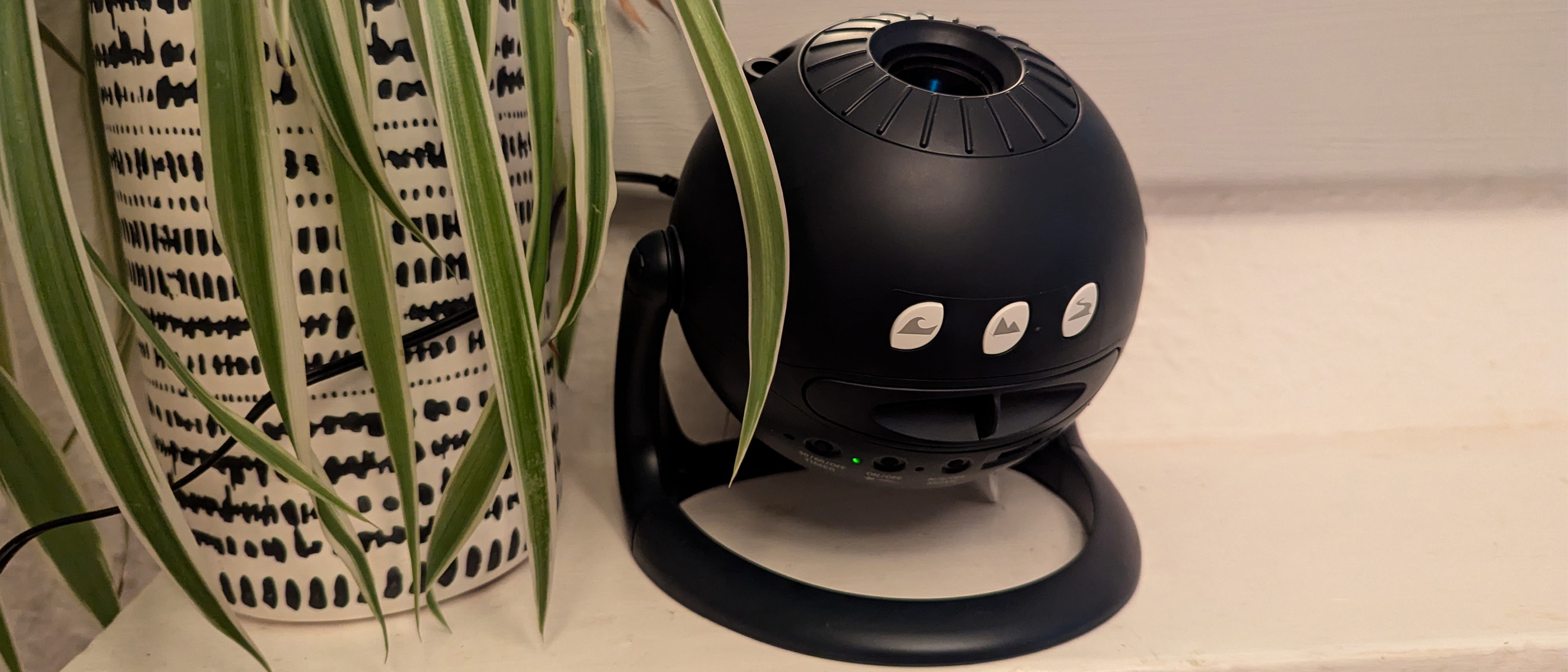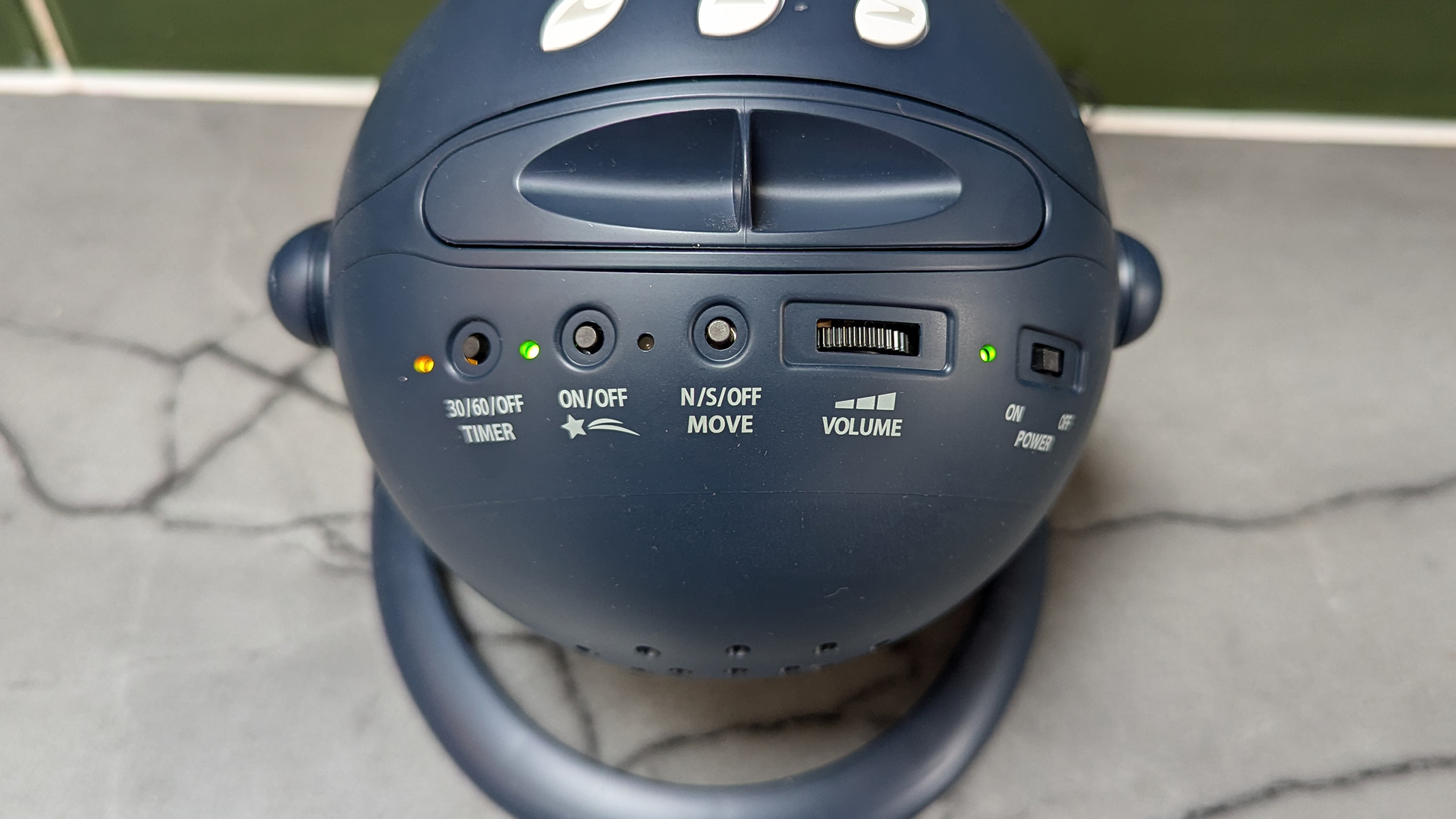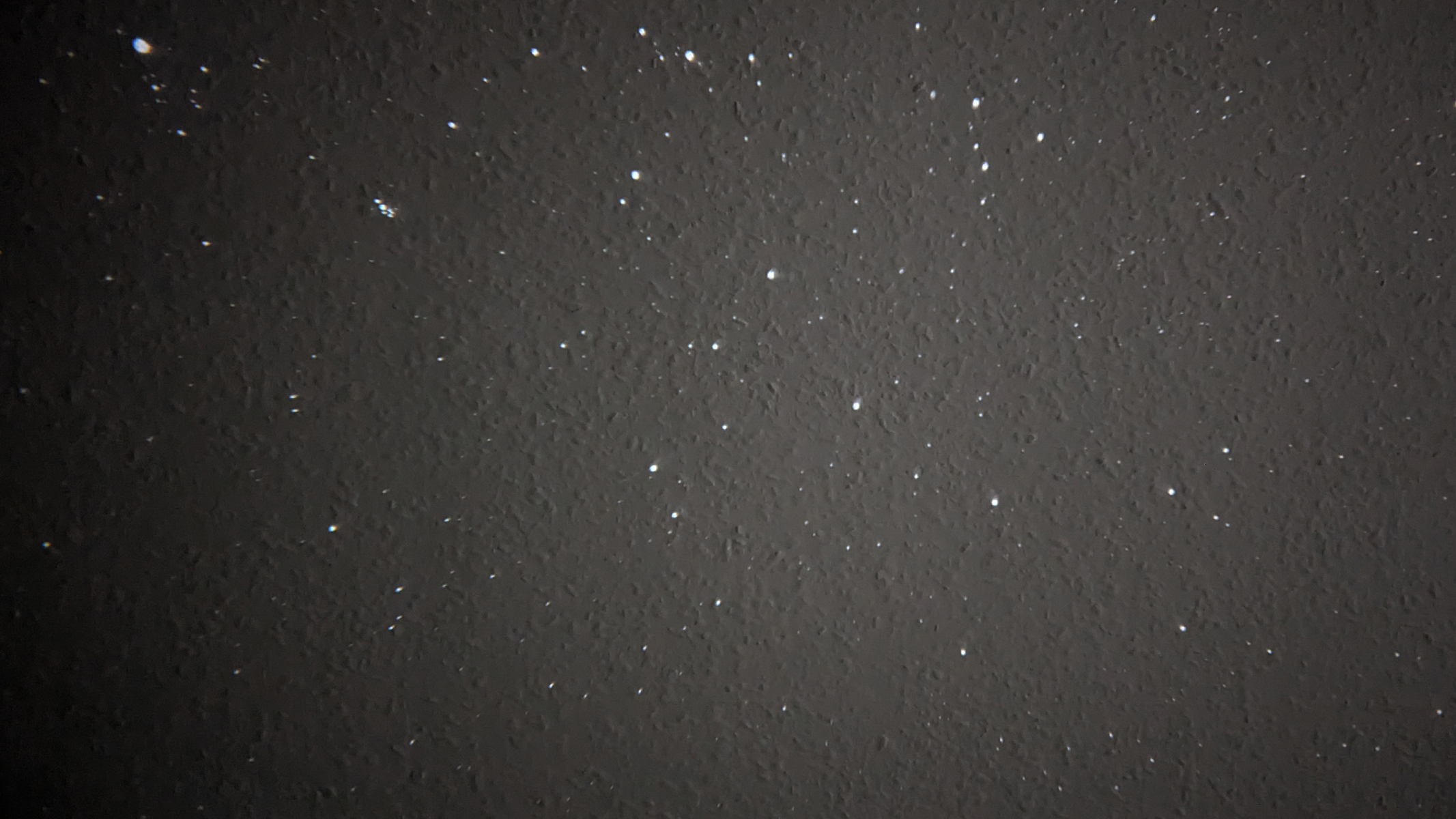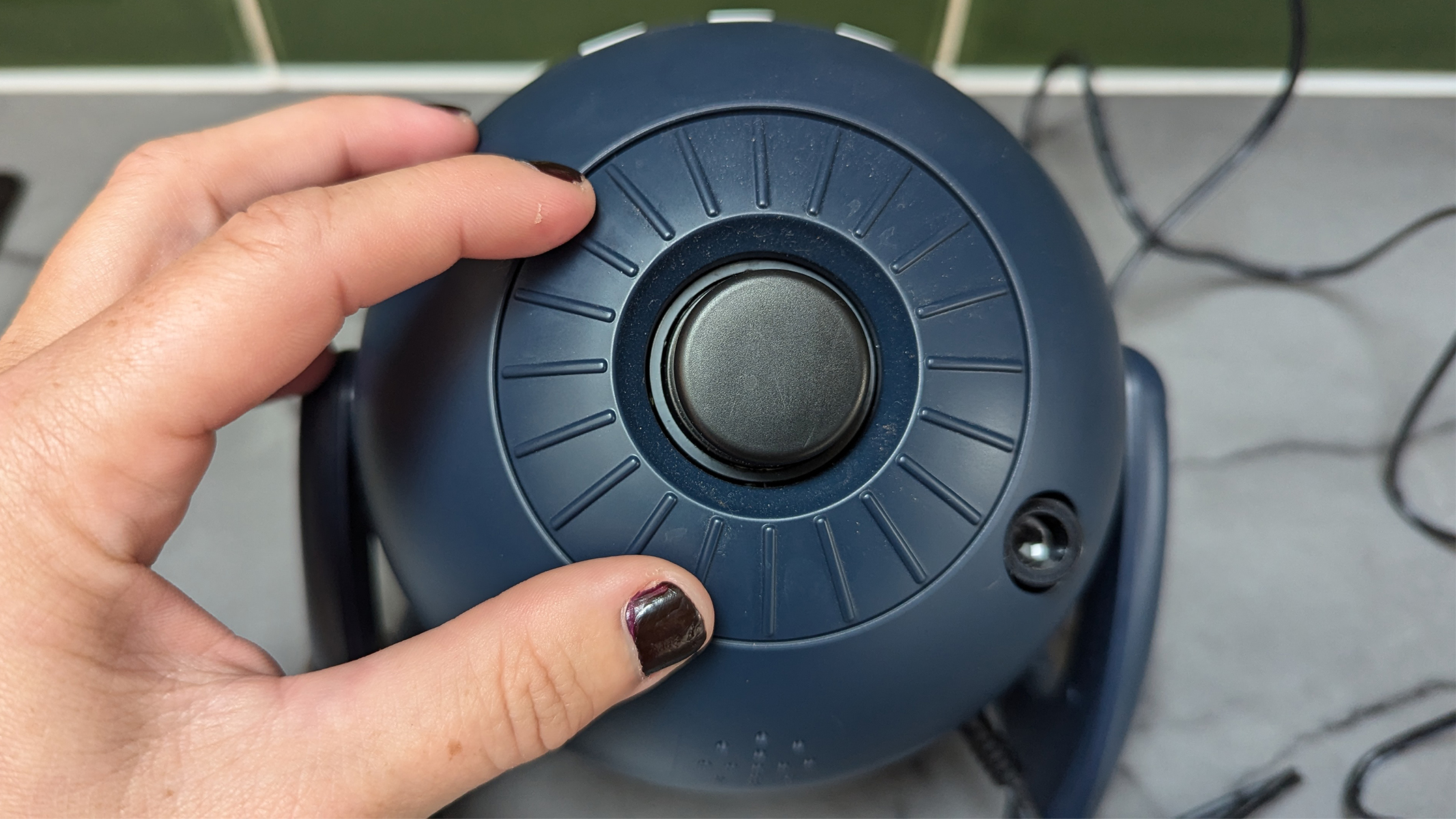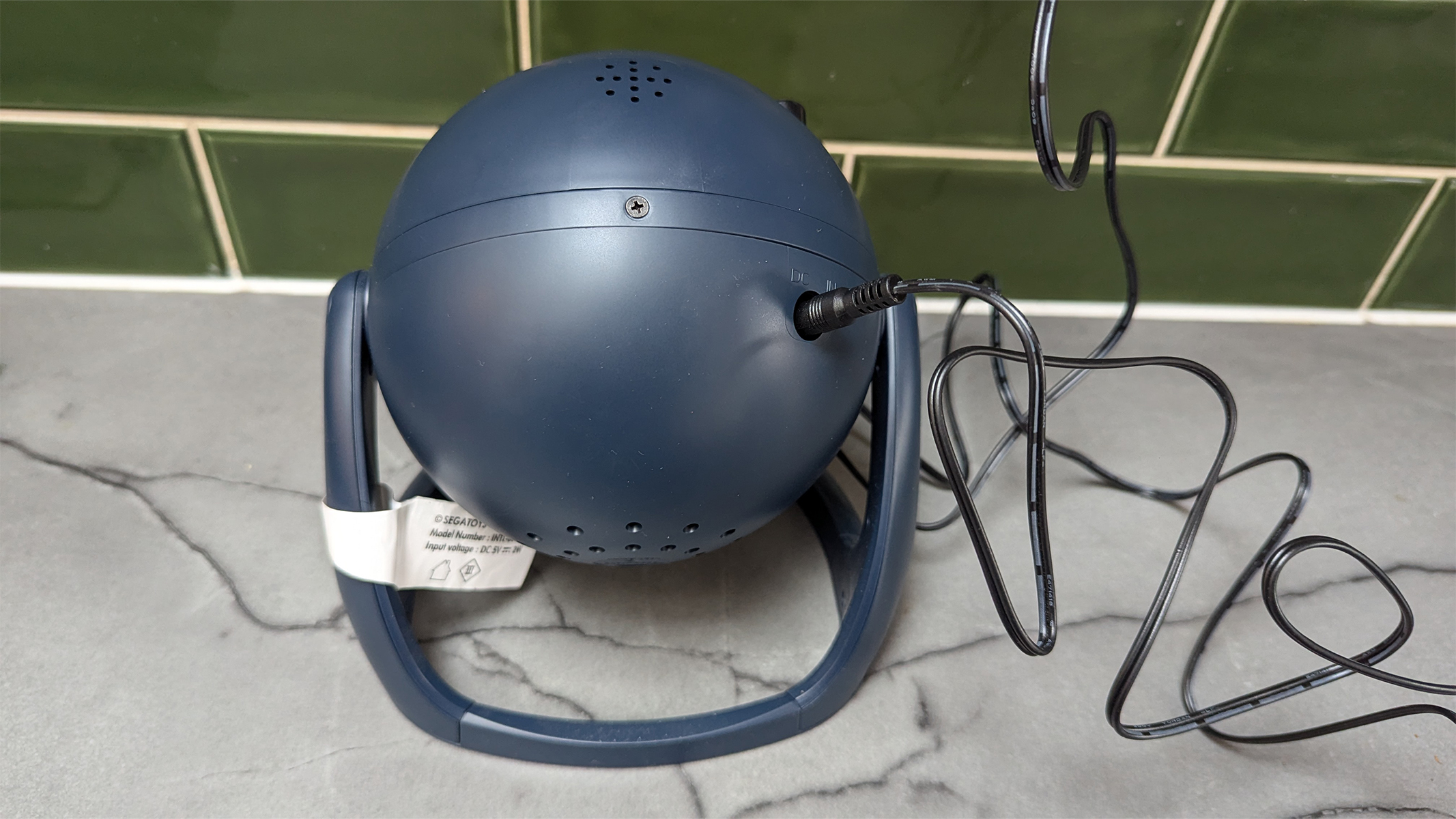Live Science Verdict
The Homestar Matataki star projector offers several features that the Homestar Flux lacks. If you're looking for twinkling stars, this is the model to choose. There are built-in 'relaxing' sounds, too, though we'd rather play our own curated playlists than the nine generic sounds on a loop. We also had expected an inbuilt rechargeable battery rather than an unsightly mains cable.
Pros
- +
Twinkling stars are unique
- +
Much cheaper than the Homestar Flux
- +
Compatible with Homestar Original and Homestar Flux discs
Cons
- -
Not rechargeable
- -
It doesn't feel as premium as the Homestar Flux
- -
The in-build sounds are a little jarring
Why you can trust Live Science
The Sega Toys Homestar Matataki is the latest star projector from Sega Toys. Back in April 2023, we reviewed the ever-popular Sega Toys Homestar Flux. Despite all of the competition on the market, including the Pococo Galaxy star projector and the Orzors Galaxy Lite Home Planetarium, it still remains a fan favorite (and one of our top picks). That said, perhaps Sega Toys felt the competition was too hot on the Flux's heels, so wanted to add another model into the mix. Meet the Homestar Matataki.
Size: 160mm x 165mm x 165mm
Bulb Type: 3 Watt LED
Laser: None
Control: On-body
Rotation: Yes
Sleep timer: Yes
Speaker: Yes (for built-in sounds)
Projection Surface: 5ft x to 8.5ft
Like the Sega Toys Homestar Flux the Matataki projects stars onto your surface of choice through small projection disks, replicating the night sky in the comfort of your living room.
The inbuilt motor rotates the projection to mimic the natural movements of the stars across the sky, making the projection feel more realistic and immersive.
The Matataki currently has a rating of 4.1 out of 5 on Amazon, although lots of users mention that the projection is only really visible in a very dark room and a couple of users have mentioned that it's too expensive for what it is.
We've had it for a couple of months now—here's what we think. Having tested a plethora of star projectors over the last couple of years, we have seen plenty of units to compare and contrast with.
Sega Toys Homestar Matataki review
Sega Toys Homestar Matataki: Design
- Simple and intuitive to use
- Looks 'fine' and fairly discrete
- It feels plastic to the touch
It would be difficult to review the Matataki without making comparisons to the Homestar Flux which is made by the same company, Sega Toys. The Flux is currently listed on Amazon for an eyewatering $259 (significantly higher than when we reviewed it), while the Matataki is priced at a much more affordable $109. That said, paying over $100 for a star projector is still a bit punchy, but we were curious as to why there is such a difference in price between the two.
There's no doubt that the Flux exudes a more premium quality finish, with a design that feels more 'adult'. Its satin black finish and solid construction give it a sophisticated, high-end look. In contrast, the Matataki has a more plasticky, toy-like feel. Available in blue or white, it lacks the refined satin finish that gives the Flux its more stylish and (in our opinion) desirable appearance.
Get the world’s most fascinating discoveries delivered straight to your inbox.
Both Sega Toys models come equipped with on-body buttons for a sleep timer, 'shooting star' feature, power, and rotation buttons. The Matataki has extra buttons for its built-in sound functionality, including three sound selection buttons and a volume control, things the Flux doesn't have.
Like with several star projectors we've reviewed, the disks are inserted into the unit via a small draw at the front of the unit, and there is a focus wheel to sharpen the image on your desired surface at the required distance.
We'd have hoped that Sega Toys would have made the button controls glow in the dark slightly. As these projectors are meant to be used in a dark room, it would be helpful to see what buttons you are pressing, though this is just a small niggle, you can't really go far wrong, even if you press the wrong button.
Packaging-wise, the Matataki comes in a pretty basic box. It's nice enough to be presented as a gift, but again, the Flux has the edge when it comes to that 'premium feel'.
Sega Toys Homestar Matataki: Performance
- A decent level of brightness
- Quiet operation
- Subtle twinkling stars and an optional shooting star
Testing the Homestar Flux and the Homestar Matataki side by side, the 3-watt LED in the Matataki versus the 5-watt LED produces a noticeably, and unsurprisingly, dimmer projection. We did have to wait until it was late at night to see the stars in all their glory. That said, we didn't mind the softer image. The Flux is so vivid it almost feels 'too bright' and, therefore, less realistic.
Two disks are supplied with the Matataki purchase—a disk containing 60,000 stars and one containing 10,000 stars, which is to be used in conjunction with the supplied 'twinkle plate'. The latter combination means the projector will give the illusion of having some of the stars twinkling. Again, this makes the image feel more realistic than the static, sharp pinpoints of light as the Flux. We think personal preference will determine which projection we prefer; we don't think one is necessarily 'better' than the other.
There is one rotation speed. You can change the direction to north or south or turn it off completely for a static image. The motor rotates quietly, but it's noticeably more noisy than the Pococo Galaxy Star Projector which is virtually inaudible.
Sega Toys Homestar Matataki: Functionality
- Mains powered (USB-A to DC cable)
- Built-in sounds
- Button controlled
Our biggest gripe with this projector is that it still needs to be plugged in to function, and worse than that, it still uses a DC charging cable, which seems very dated. The previous two models we've reviewed, the Orzors and the Pococo, are both rechargeable. You can leave them plugged into the mains and use them that way, or you can move them away from the power source to position them in a more appropriate place.
Now, let's talk about the nine built-in sounds. Some people may love them, but we think they are unnecessary extras. We'd much prefer that you just use the speaker as a Bluetooth speaker to play sounds, music, or an audiobook of your choosing. Again, they may help some drift off to sleep, but once we'd tested them out a few times, we didn't touch those sound control buttons again.
Should I buy the Sega Toys Homestar Matataki?
The Homestar Matataki is a perfectly adequate projector. Unless you want super vivid pinpoint stars, we'd recommend this lower-priced option over the Homestar Flux.
That said, there are other star projectors on the market that might be more suited to your needs or more appropriate for your budget. This includes projectors that aren't necessarily scientific but that create a soothing space-like environment. Take a look at our best star projector guide for our top picks.
Sega Toys Homestar Matataki isn’t for you
As mentioned above, the models we have tried and tested can be found in our best star projectors guide (if we deem them worthy enough).
One of our favorites is the Orzors Galaxy Lite Home Planetarium Star Projector. It is considerably cheaper than the Sega Toys models but easily rivals both in terms of quality of build and projection. It's rechargeable too!
The Pococo Galaxy star projector is another top choice. The projections are bright and vivid, even when it's not dark outside. We were impressed. The rotating motor is also near silent, so perfect if you're a light sleeper who wants to stay asleep once you've dozed off!
If you're shopping for a child, you might want to consider the Dinosaur Egg Galaxy Star Projector. It isn't scientific or educational, but it's a themed item to add ambiance to a room or to use as a sleep aid. The hatching dinosaur egg design will appeal to any young space or dinosaur fan, The Astronaut Starry Sky Projector also has that same appeal — both of these models have been used and loved by family members of LiveScience since our reviews, and what's better, they can usually be picked up for a bargain, especially on days like Amazon Prime day.

Tantse Walter is a writer, photographer, and travel enthusiast who has spent over a decade facilitating global adventurous expeditions. She loves getting into the nitty-gritty of sourcing and planning itineraries, getting out and about in nature, and admiring the night sky. She is currently a contributing writer to both Space.com and LiveScience.com.
